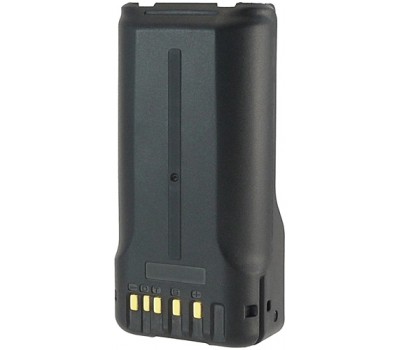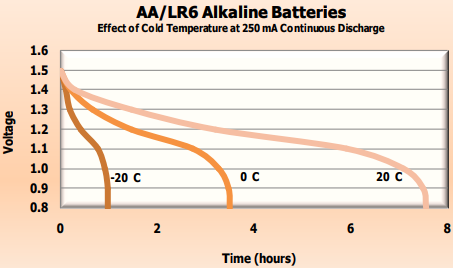
I recently read an article on the web that attempted to discuss whether or not you should use ‘off brand’ batteries in handheld devices. It resoundingly said ‘no’. The single argument that it provided was that the radio was manufactured with a specific battery in mind, citing that “Motorola and Kenwood batteries are specifically made to work in two way radios” so you should use them.
No. As a general rule of thumb, using off-brand batteries in two-way radios is not recommended. The manufacturers of two-way radios have a particular battery in mind when they design each two-way radio. If you stray away from manufacturer standard settings, you are much more likely to encounter hiccups and errors with the device. This is the main reason we highly recommend using the proper brand of batteries as opposed to an off brand.
The rest of the article then went on to identify when you needed to replace your mobile radio batteries. There was no further mention of anything about why you should use only Original Equipment Manufacturer batteries….. How disappointing.
It reminded me very much of a warning on an early electron tube carton that I saw in a museum that warned of the dangers of a competitor’s product in place of the original tube.
As amateur radio operators, we should all be skilled in the art of electronics, and we should all know that component substitution and replacement is a common occurrence. The secret sauce is to ensure that the device you are replacing is replaced with a device with EQUAL or BETTER specifications. Don’t replace a 10A rectifier diode with a 100mA switching diode – it will immediately fail as soon as it is overloaded over its 100mA design rating. Similarly, it is simple to replace a 10A diode with a 20A unit – that will work just fine (As long as its voltage rating is also ok) – you get the idea.
It infuriates me to see ‘professional’ (giggle) articles offered on the web that are simply advertisements for a company that show how awesome the company is. So, let’s get to the crux of the matter.
How are batteries specified?
So – If we are looking at replacing a battery, it is important to look at how the battery will be used, and there are a number of basic operating parameters that we need to pay attention to;
- What is the voltage of the battery
- What is the capacity of the battery (mAh)
- What is the battery chemistry
- What operational temperature requirements does the battery have
- What is the physical size of the battery
Of course, in the context of a handheld battery, you are looking at replacing the entire battery pack, so these will be fixed numbers based on the design of the pack.
Let’s look at what these specifications mean.
Battery Voltage
All battery packs have a specified voltage. This may be 45v as provided by the ancient ‘B’ batteries used in valve radios, 7.4 volts in your mobile radio pack.
These voltages are achieved by connecting individual batteries in series. Each battery chemistry has its own terminal voltage;
- NiCad / NiMh – 1.2v per cell
- Lithium – 3.6v per cell
- Alkaline – 1.5v per cell (non rechargeable)
Now we know that battery packs are made from multiple cells – your 9V battery is likely constructed from 6 AAAA 1.5v cells in series, providing the 9V. Your Baofeng battery has 2 lithium cells connected in series, providing approximately 7.4 volts. We can even combine more cells to make higher capacity batteries using three lithium cells, providing 10.8 volts, allowing for increased transmit output. In all cases, individual battery cells combine to provide a final pack voltage.
Battery Capacity
The capacity of a battery is measured in units of Ah (Amp Hours) or more likely mAh (milliAmp Hours). This relates to how long a battery will provide a particular current for.
A 2000mAh battery will provide 2000mA for a period of one hour.
Roughly, you can consider capacities to be linear within reason – so our 2000mAh battery will reasonably be expected to provide 1000mA for two hours, or 100mA for 20 hours, or 4000mA for 1/2 hour. This gives you an indication as to how long the battery will be expected to operate in service.
Of course, handheld radios don’t consume constant current – they consume more current when they are transmitting than when they are receiving, so the current consumption is dependent on how long you hold the PTT down for.
Most manufacturers specify some useful numbers to allow us to identify how long the radio will operate. With the specification sheet for a particular radio, you will find a duty cycle specified – it might be something like “5-5-90 duty cycle” – this means 5% of the time transmit, 5% receive, and 90% standby, or “10-10-80” which means 10% of the time transmit, 10% receive, and 80% standby. Beside these specifications are standard operating times,listed like this:

Here you can see that the radio will operate for 10 hours with a 2000mAh battery at 5-5-90 and 6.5 hours with the same battery at 10-10-80 duty cycle.
Talk less, listen more, better life… There is a lot to appreciate in that simple sentence.
Battery Chemistry
How the world has changed in the years – When I was a youngster, the best I could do was put a set of NiCad batteries into my radios with a capacity of about 600mAh per cell. Nickel Cadmium was our best rechargeable battery chemistry available then. It hated cold weather and self discharged rapidly. It was also very fussy about how it was charged.
Nowadays, we have a plethora of Lithium chemistries available for our rechargeable batteries, a quick trip to batteryuniversity.com shows a list.
The most common chemistry used for radios is Li-Po, with a rated voltage of 3.4v per cell and extremely high cell capacity density. Li-Po allows batteries to be manufactured in pouches which are able to be made in many different sizes.
Another common chemistry for larger packs is Li-Ion. This is used in single cells such as the 18650, and each cell provides 3.7v – 18650 cells are available with capacities ranging from 1000mAh to 3000mAh, depending on how much you are prepared to pay for individual cells. They are commonly used in the hundreds in electric vehicle batteries.
Essentially – as battery chemistries improve, battery voltage and capacity for a given size increases.
It is worth keeping in mind here though, that quality of manufacture is a factor. Many 18650 cells on eBay are listed as being 4000mAh for only a couple of dollars each, while quality brand 2400mAh cells sell for $14. About twice the capacity for 1/3 the price……….. Nah….. Quality is really important.
Operational Temperatures
Different battery chemistries have prefered temperature ratings for optimum output.
While not rechargeable, Alkaline batteries have a capacity the drops considerably in cold temperatures – Here is the graph from energizer showing performance;

Lithium Ion batteries can be operated in temperatures between -20 and 60 degrees celsius, but they can only be changed above zero degrees. Attempting to change them at negative temperatures causes cell damage.
Physical Size of the Battery
Of course, the final consideration is one of physical dimensions – Batteries are designed to be interoperable with enclosures and cases. The battery has to be physically enclosed in a housing that is capable of being mated with the radio.
That housing has to also contain Battery Management System (BMS) circuitry to prevent the battery from being discharged to the point of damage. Most manufacturers do a reasonable job of the BMS electronics, and there are a heap of standard components to do the heavy lifting.
What Do The Specifications Look Like
If we look at a typical battery, say, for a Kenwood radio, we could look at the KNB-L1 as shown as the header image of this article. This battery is designed to provide power for a NX-5200 radio. It provides 7.5V at 2000mAh – for up to 10 hours between -30 and +60- degrees celsius. It uses Lithium Ion chemistry, and therefore has a change controller built into it.
Once a manufacturer knows those specifications, it is a very simply task to create a compatible moulding, and select suitable cells to produce a battery pack to the same specifications. The secret is to ensure that the manufacturer is reputable, and produces batteries that confirm to the specification. There are a number of manufacturers on AliExpress and eBay that use inferior cells that have difficulty achieving the required specification.
See – we are using the word specification again – it is the key.
The interesting specification here is the operation at -30 degrees. As temperatures drop, batteries would be very limited in their capacity at such low temperatures. Friends I know who work at the Antarctic base regularly talk about keeping the radio inside their jackets, near their body, to keep them warm.
What’s the answer
Easy – It is absolutely ok to substitute original manufacturer batteries, as long as you are substituting like for like.
Choose a reputable manufacturer, do a purchase of a small sample and then test their batteries yourself. None of this is rocket science.
Exactly the same principle applies to camera batteries, to RC Car batteries, even to 18650 Cells that you use in your field power packs.
What is rocket science is understanding the people who believe that a $12 battery that they brought on eBay will perform as well as the $280 pack they could get from kenwood. That’s a special kind of science that is outside the scope of a technical blog to understand.

